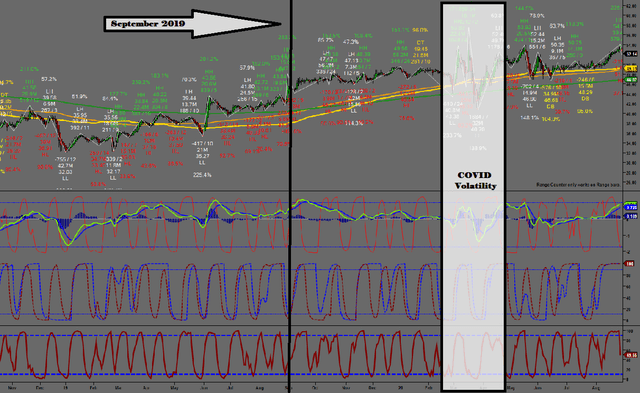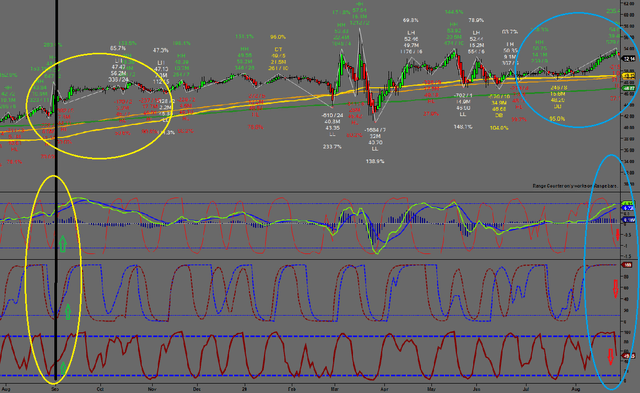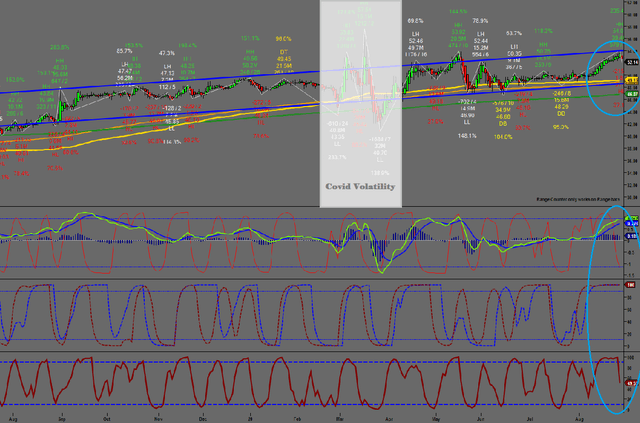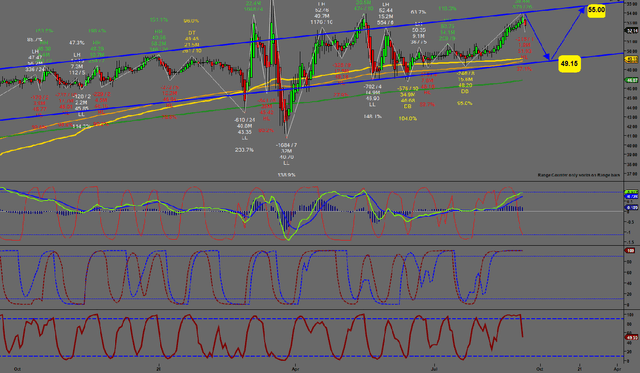“It's only when the tide goes out that you learn who's been swimming naked.” -Warren Buffett
If you follow any market for an extended period of time you will notice certain patterns in price action. In particular, you will notice that the market moves in waves. It is pushed in certain directions by large buyers and sellers in the markets. These large buyers and sellers have the ability to change the direction of the wave pattern. And, when they all align you get a tsunami. Just like the guy trying to find that monster wave, traders are on the look out for the same phenomena.
At what point do you know the wave is about to "break"? This is the million dollar question, because in surfing and trading, timing is everything.
One of my favorite tools to use in trading are trend-lines. Trend-lines help you to see where the "break" is.
Trend-lines are used to find the trend, but they also tell you when the trend has changed direction. That is, when another large buyer or seller has entered the market and changed the direction of the prevailing trend. If the dominant trend is up and a major player comes in and starts selling, it will push the trend in another direction. This push causes a "break" in the trend. In the world of trading this is referred to as a breakout.
Let's take a moment to familiarize ourselves with the following chart. This is my own chart setup on Ninjatrader 7. We're looking at a price chart of NASDAQ futures (my favorite instrument to trade).
For now, disregard the bottom half of the chart and just focus on the top segment. Also disregard the green, yellow and orange lines -- we'll talk about what those mean later. For now, just focus on the candlesticks and the blue lines. The blue lines are trend-lines.
At first, you will notice blue lines following the trend up and then the trend changes and starts going down.
Now let's get laser focused on the first trend-line going up.
As you can see, the price bounces off the bottom of the trendline three times before finally gaining enough traction to continue upward. It doesn't quite reach the top of the trend-line before it starts trending down. This is when you start looking for a breakout.
The trendline supported the price three times before, and now
it's breaking through the trend line. This breach is the
breakout. Once you see the breakout, it's time to act. As you can see there are two breakouts. The first one is a breakout down and the second is a breakout up.
Both breakouts represent an opportunity to "ride the wave". The trend is up, another wave comes in and starts selling and changes the wave pattern down. The push is so strong that it forces the trend to change direction and that change in direction is marked by a breakout.
In trading, there is no sure thing. The best thing you can do is find an indicator that works 75% of the time. One way to boost your accuracy is by confirming the direction of the breakout with another indicator.
Now we can look at the bottom part of the chart. The breakout down is confirmed with a down movement by both of the bottom indicators. The second breakout is also confirmed by an up movement by both of the bottom indicators.
Now what? Once you find the breakout you want to place a trade with a take profit (TP) that's at least 2x as much as your stop loss (SL). For example, once I see the first breakout I'm going to place a trade with a SL of 40 ticks and a TP at 80 ticks. Some traders like to go for 3x or 4x. That depends on your risk. When you're first starting out, I think it's safe to go for 2x. This way, if you get one trade wrong and one trade right, you're still up.
This is by far my favorite set up. If you have any questions, post them in the comments below or email me at celanbryant @ gmail.com.
Good luck.






